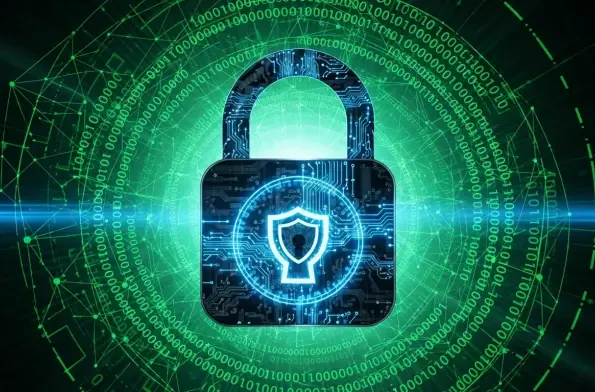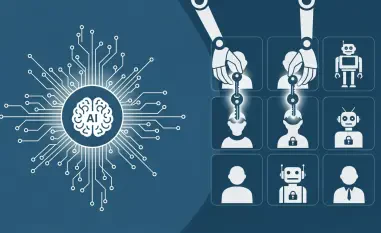Overview of Third-Party Cyber Risks in Today’s Business Environment
Imagine a sprawling supply chain network where a single weak link—a contractor with outdated security protocols—becomes the gateway for a devastating cyberattack, costing millions in damages and downtime. This scenario is increasingly common as businesses across industries rely heavily on third-party vendors, exposing themselves to significant cyber risks. In capital-intensive sectors like energy, construction, and manufacturing, where external partners often access critical systems and sensitive data, the stakes are even higher.
The growing interconnectedness of global supply chains has amplified vulnerabilities, with cyberattacks targeting third parties becoming a preferred method for malicious actors to infiltrate larger organizations. Reports indicate that a substantial percentage of data breaches originate from third-party access, highlighting the urgency of addressing these gaps. As digital transformation accelerates, the need for robust cybersecurity measures to protect against such threats has never been more apparent.
This industry report delves into the escalating challenge of third-party cyber risks and examines a groundbreaking solution introduced by ISN, a global leader in contractor and supplier information management. Through its ISNetworld platform, ISN aims to redefine how businesses safeguard their operations, focusing on integrated tools that tackle vulnerabilities head-on. The discussion will explore the features, market impact, and future implications of this initiative in a rapidly evolving landscape.
Detailed Analysis of ISN’s Cyber Secure Solution
Key Features and Innovations
ISN has rolled out Cyber Secure, a transformative addition to the ISNetworld platform, designed specifically to address third-party cyber risks with cutting-edge tools. At the core of this solution is the Cyber 360 assessment, which offers detailed evaluations of contractors’ cybersecurity postures by benchmarking them against global standards. This enables Hiring Clients to identify potential weaknesses before they become exploitable threats.
Another standout feature is the breach scanning functionality, which provides continuous monitoring of a contractor’s cyber environment and public perception. By scanning for data leaks and other indicators of compromise, this tool ensures that risks are detected and addressed in real time. Such proactive measures are critical in an era where cyber threats evolve at an unprecedented pace.
What sets Cyber Secure apart is its seamless integration into existing contractor and supplier oversight processes, offered at no additional cost to clients. This eliminates financial barriers, making advanced cybersecurity accessible to organizations of varying sizes. By embedding these capabilities into a familiar platform, ISN streamlines adoption and enhances overall risk management efficiency.
Impact and Market Relevance
The introduction of Cyber Secure comes at a pivotal moment when cyber threats targeting supply chains are on the rise, with critical infrastructure sectors bearing the brunt of sophisticated attacks. Industries such as oil and gas, utilities, and transportation have faced mounting incidents, underscoring the urgent need for comprehensive solutions. ISN’s timely response positions it as a frontrunner in addressing a pressing market gap.
By offering a centralized system for cyber risk oversight, ISN strengthens its reputation as a holistic risk management provider, setting a new standard for the industry. Early feedback from stakeholders suggests strong interest, particularly among enterprises seeking to bolster supply chain security without overhauling their current systems. The potential for widespread adoption is significant, especially as businesses prioritize resilience over mere compliance.
Looking ahead, Cyber Secure is poised to play a vital role in safeguarding critical infrastructure over the next few years, from 2025 to 2027 and beyond. As cyber threats grow in complexity, tools like these will likely become indispensable for maintaining operational continuity. The market’s appetite for integrated solutions signals a shift toward proactive defense mechanisms across sectors.
Challenges in Securing Supply Chains Against Cyber Threats
Managing third-party cyber risks presents a host of challenges for organizations, starting with the sheer complexity of modern supply chains. With numerous vendors and contractors involved, gaining visibility into each entity’s security practices is a daunting task. Many companies struggle to enforce consistent standards across diverse partners, often leading to overlooked vulnerabilities.
Technological hurdles further complicate the landscape, as integrating new cybersecurity tools with legacy systems can be cumbersome and resource-intensive. Compatibility issues and the need for specialized expertise often delay implementation, leaving gaps in protection. Additionally, operational challenges arise in ensuring contractor compliance, as smaller vendors may lack the resources or awareness to meet stringent requirements.
To navigate these obstacles, strategies such as leveraging centralized platforms for risk assessment and fostering collaboration between stakeholders are essential. ISN’s Cyber Secure addresses many of these pain points by simplifying evaluations and providing actionable insights. Encouraging a culture of shared responsibility, where all parties prioritize security, is another step toward mitigating risks effectively.
Regulatory and Compliance Landscape in Cybersecurity
The regulatory environment surrounding third-party cyber risk management is becoming increasingly stringent, with laws and standards evolving to address emerging threats. Frameworks like GDPR in Europe and various data protection regulations in the United States mandate strict controls over how organizations handle sensitive information, including that shared with vendors. Non-compliance can result in hefty fines and reputational damage.
Maintaining adherence to these requirements is crucial for operational integrity, particularly in industries where breaches can have far-reaching consequences. Beyond avoiding penalties, compliance fosters trust with stakeholders and ensures that businesses remain competitive in a landscape where security is a key differentiator. The pressure to meet these obligations often drives investment in robust cybersecurity measures.
Cyber Secure supports Hiring Clients by aligning assessments and monitoring with global standards, streamlining the compliance process. By automating much of the documentation and reporting, the tool reduces administrative burdens while ensuring that organizations stay ahead of regulatory demands. This alignment is a critical asset for companies navigating a complex web of legal expectations.
Emerging Trends and Future Outlook in Supply Chain Cybersecurity
Cybersecurity in supply chain management is witnessing rapid evolution, with trends pointing toward continuous monitoring and advanced threat detection technologies. Machine learning and artificial intelligence are increasingly being deployed to predict and prevent attacks before they occur, marking a shift from reactive to anticipatory strategies. These innovations promise to enhance the precision of risk identification.
Another notable development is the growing emphasis on supply chain resilience, as businesses recognize that preventing every threat is impossible. Instead, the focus is shifting to rapid response and recovery, ensuring minimal disruption in the event of an incident. This mindset is driving investments in redundancy and contingency planning across industries.
Looking forward, solutions like Cyber Secure could shape the trajectory of risk management by integrating emerging technologies and adapting to global economic and regulatory shifts. As digital-first approaches dominate, the need for scalable, adaptive tools will intensify. The coming years will likely see heightened collaboration between technology providers and businesses to build fortified supply chains capable of withstanding sophisticated threats.
Reflections and Path Forward
Reflecting on the insights gathered, it becomes evident that ISN’s launch of Cyber Secure marks a significant milestone in addressing the pervasive issue of third-party cyber risks. The integration of advanced tools into the ISNetworld platform provides a practical solution for organizations grappling with supply chain vulnerabilities. This initiative stands out as a beacon of innovation in an industry often slowed by complexity and resistance to change.
The discussions around regulatory compliance and emerging trends underscore the challenges that lie ahead, yet also highlight the potential for transformative impact. ISN’s commitment to client support and global reach offers a foundation for sustained progress in critical infrastructure protection. The early market response hints at a broader acceptance of integrated risk management as a necessity rather than an option.
Moving forward, businesses are encouraged to prioritize partnerships with solution providers like ISN to build adaptive cybersecurity frameworks. Investing in training and awareness for contractors emerges as a key next step to ensure uniform security standards. Ultimately, fostering a proactive stance against cyber threats promises to be the most effective way to secure supply chains for the long term, paving the way for resilience in an unpredictable digital landscape.













